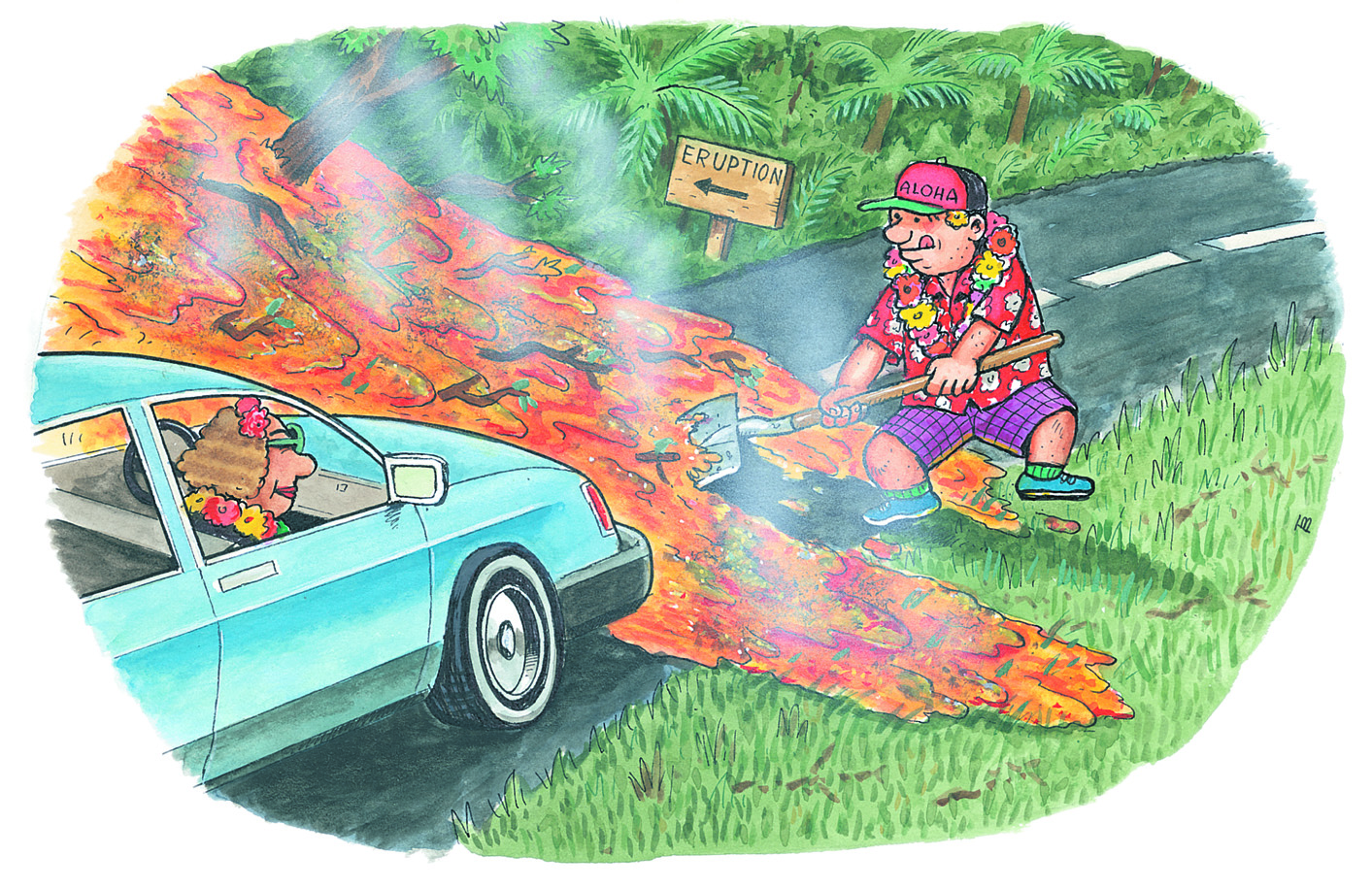
Overview
In this section you will find materials that support the implementation of EarthComm, Section 8: Volcanic Hazards: Flows.
Learning Outcomes
- Use a model that explores the relationship between the volume and surface area of a lava flow.
- Plan and carry out investigations that examine factors that affect lava flows.
- Analyze data from a computer model that simulates mudflows from a volcanic eruption.
- Gather information about volcanic hazards associated with various kinds of flows.
Inquiring Further
- To learn more about the Columbia River Basalt Group in the Northwest, visit the following web sites:
Columbia River Basalt Group, CVO USGS
Background information, descriptions, and maps of the Columbia River Basalt Group.
Columbia Plateau Features, Volcano World Oregon State
The Columbia River Flood Basalt Province forms a plateau of 164,000 square kilometers between the Cascade Range and the Rocky Mountains. Read about its formation and how it compares to flood basalts in other parts of the world.
Flood Basalt Deposition, Idaho State University
Scroll down to the section on Methods of Lava Emplacement to read different ideas by scientists about the timing of the flood basalts.
- To learn more about how lava flows affect the biosphere,visit the following web sites:
Volcano World, Oregon State University
Identify volcanoes by name or region and find images and information about past eruptions.
Earth - Ocean Interactions Program, NOAA and Pacific Marine Environmental Lab
In-depth descriptions of hydrothermal vents and their unique ecosystems where chemical energy nurtures life instead of sunlight.
- To learn more about what happens when lava erupts beneath glaciers and snow,visit the following web sites:
Mount Rainier, Washington, USGS
Information on the eruptions of Mt. Rainier.
Cascade Range Volcanoes, USGS
Provides links to all of the Cascade Range volcanoes, which provide background information and eruption data.
Bardarbunga/Grimsvötn Volcanoes, Iceland, Michigan Technological University
Includes location data and reports on volcano activity.
Resources
To learn more about this topic, visit the following web sites:
Lava
Lava Flows, Volcano World Oregon State
View a slide show of different forms of lava with color photos and descriptions of each type. Site also includes a list of references and activities about lava.
Magma, Lava, Lava Flows, Lava Lakes, etc., USGS
Learn more background information about lava and related processes using the USGS glossary.
Types of Lava, ETE
A general overview of lava including a description of how silica and water content varies in different types of lava.
Lava and Water, San Diego State University
Learn what happens when lava erupts into the air, water, and soft sediment. Includes photographs of different kinds of deposits.
Pyroclastic Flows
Pyroclastic Flows and Pyroclastic Surges, USGS
Learn how pyroclastic flows and surges form, how they are different, and the hazards they pose to people.
Pyroclastic Flows, Volcano Information Center UCSB
An overview of pyroclastic flows. Includes a discussion of how geologists discovered pyroclastic flows as well as a list of journal and book references about pyroclastic flows.
Pyroclastic Flow, USGS
Definition of a pyroclastic flow from the USGS glossary of volcanic terms.
Lahar
Debris Flows, Mudflows, Jökulhlaups, and Lahars, USGS
Gives a detailed introduction to lahars including what initiates a lahar flow and the composition of a lahar flow. Provides several historic examples of lahar flows associated with volcanic eruptions.
Modeling Volcanic Debris Flows, USGS CVO
Watch a short video about scientists using different approaches to learn about debris flows.
Cascade Volcanoes Observatory Hazards Maps, USGS CVO
Simplified maps showing the locations of hazards from ash, pyroclastic flows, and lahars.
